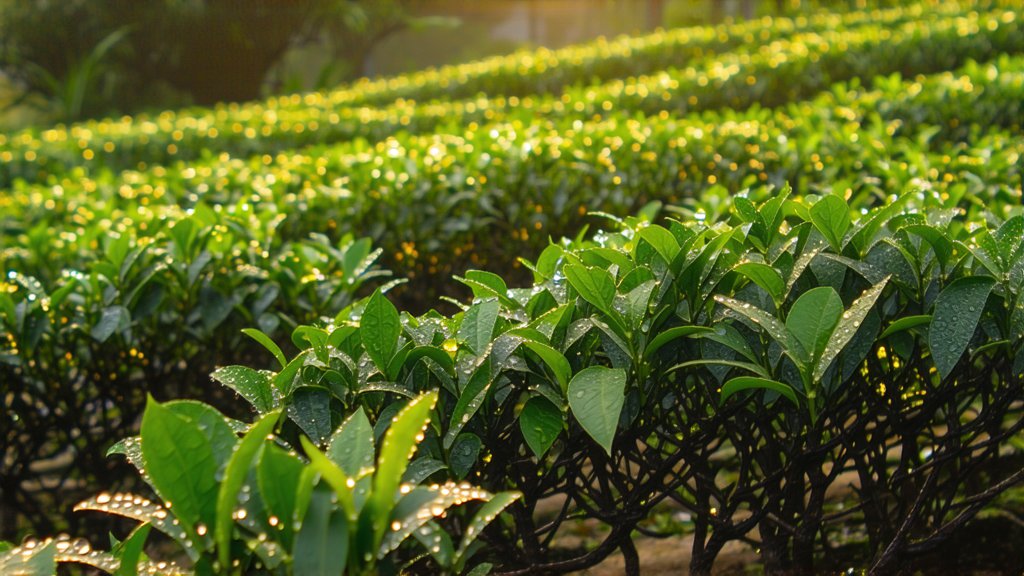
Nestled in the heart of Hunan Province, amidst the mist-shrouded mountains and verdant valleys, lies the birthplace of one of China's most enigmatic and revered teas – Junshan Yinzhen. This exquisite yellow tea, also known as Junshan Silver Needle, is a testament to the intricate artistry and profound wisdom embedded in Chinese tea culture. With its golden hue, delicate aroma, and unique flavor profile, Junshan Yinzhen stands as a beacon of excellence in the world of tea, captivating connoisseurs and newcomers alike.
A Glimpse into History
The origins of Junshan Yinzhen can be traced back over a millennium, to the Tang Dynasty (618-907 AD), when it was first cultivated by Buddhist monks on Junshan Island, located in Dongting Lake. Legend has it that the tea was discovered accidentally when tea leaves were left to wither under a cloth, turning them yellow instead of the typical green. This serendipitous find led to the development of a distinct processing method that would become synonymous with yellow teas.
Throughout Chinese history, Junshan Yinzhen has been celebrated not only for its exceptional taste but also for its association with spirituality and wellness. It was considered a precious offering to emperors and a symbol of purity and elegance. Today, it continues to hold a special place in Chinese culture, representing the harmony between man, nature, and the art of tea making.
The Dance of Transformation: Processing Junshan Yinzhen
The magic of Junshan Yinzhen lies in its meticulous production process, which involves several stages designed to coax out the tea's inherent qualities while imparting its characteristic yellow color and subtle flavors. Unlike green or black teas, yellow tea undergoes a unique "sealing yellow" (闷黄) process that sets it apart.
-
Plucking: The journey begins with the careful hand-picking of young tea buds and leaves, typically in early spring when they are at their freshest and most succulent. Only the finest shoots, often described as "silver needles," are selected.
-
Withering: The freshly picked leaves are spread thinly on bamboo mats and left to wither under the sun or in shade, allowing them to lose moisture slowly. This step softens the leaves and prepares them for the next phase.
-
Fixation: To halt oxidation and preserve the yellow hue, the withered leaves undergo a brief steaming or pan-frying process. This step is crucial as it sets the stage for the tea's unique color and flavor development.
-
Sealing Yellow: The defining characteristic of yellow tea production, this stage involves wrapping the fixed leaves in cloth or paper and letting them rest in a controlled environment. During this period, a gentle enzymatic reaction occurs, turning the leaves a pale yellow or golden color. The duration and conditions of this process vary depending on the desired outcome for each batch.
-
Drying: Finally, the sealed yellow leaves are dried slowly, either through sun drying or low-temperature oven drying, to reduce moisture content further and stabilize the tea for storage and transportation.
Savoring the Essence: Tasting Junshan Yinzhen
To truly appreciate Junshan Yinzhen, one must embark on a sensory journey that engages all aspects of the tea-drinking experience. Here’s how to approach the ritual:
-
Visual Appreciation: Observe the dry leaves, noting their slender shape and silvery-green hue. Upon infusion, watch as they unfurl gracefully, revealing a bright yellow liquor that shimmers like liquid gold.
-
Aroma: Bring the cup close to your nose and inhale deeply. The scent of Junshan Yinzhen is subtle yet complex, with notes of fresh grass, sweet hay, and a hint of floral undertones.
-
Tasting: Take a slow sip, allowing the tea to coat your palate. The initial flavor is mildly sweet with a creamy texture, followed by a gentle bitterness that quickly dissipates, leaving a clean, refreshing finish. There may also be subtle fruity or nutty nuances depending on the specific batch.
-
Aftertaste: Pay attention to the aftertaste, which should linger pleasantly, providing a sense of warmth and tranquility. A high-quality Junshan Yinzhen will leave a lasting impression on your taste buds and mind.
Cultural Significance and Modern Appeal
Beyond its physical attributes, Junshan Yinzhen embodies the philosophy of balance and moderation central to Chinese tea culture. Its production reflects an intimate understanding of nature's rhythms and the importance of patience and precision in achieving perfection. As such, it serves as a bridge connecting past traditions with contemporary lifestyles, promoting mindfulness and well-being.
In recent years, Junshan Yinzhen has gained international recognition, appealing to tea enthusiasts worldwide who seek unique and authentic experiences. Its growing popularity underscores a global appreciation for the depth and diversity of Chinese tea heritage.
In conclusion, Junshan Yinzhen is more than just a beverage; it is a cultural treasure that invites us to slow down, savor each moment, and reconnect with ourselves and the natural world. Whether enjoyed alone as a meditative practice or shared among friends in lively conversation, this golden delight from Hunan Province offers a timeless escape into the heart of Chinese tea tradition.